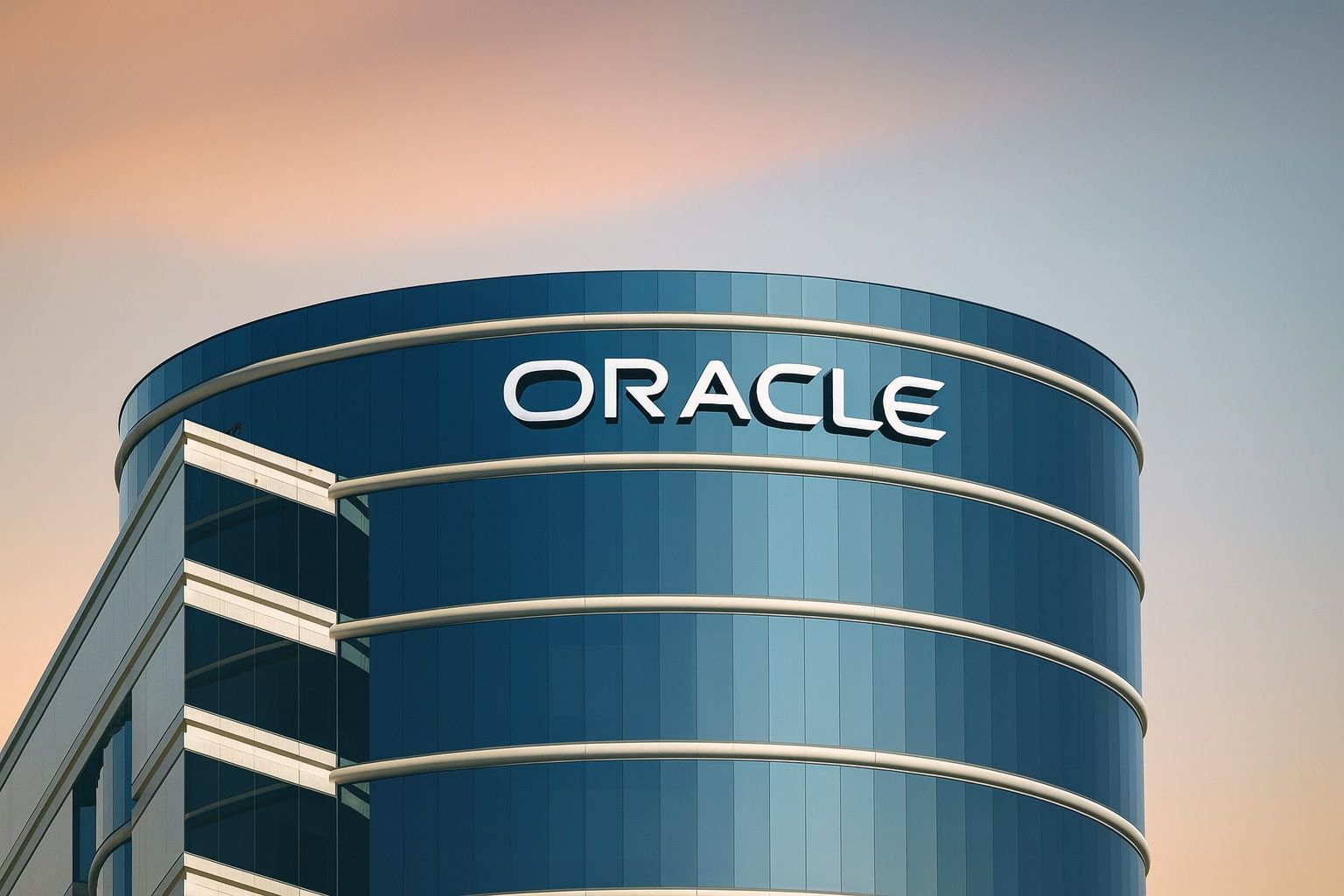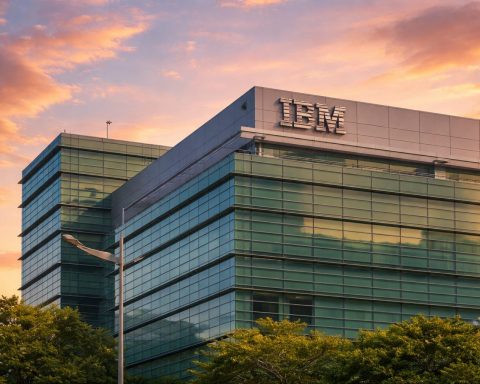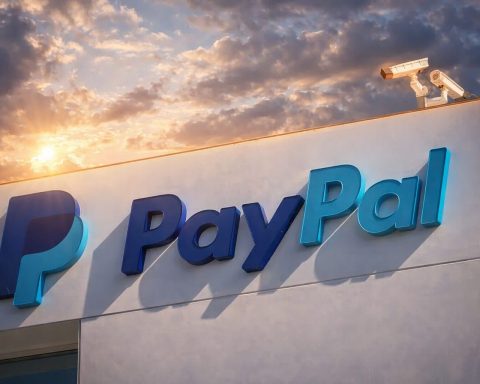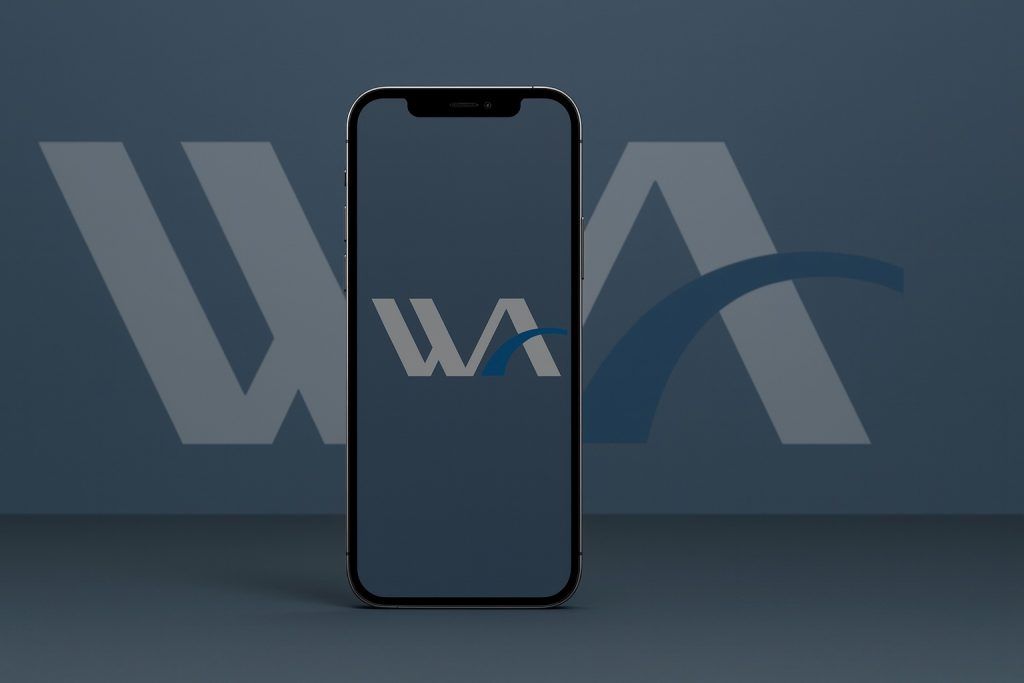- Stock snapshot: ORCL shares are trading around $304 on Oct 16, 2025, slightly above last week’s close of $303.62 [1]. The stock has roughly doubled year-to-date, up about 70–80% in 2025 on the back of huge AI cloud contracts and investor excitement [2] [3].
- Recent earnings & deals: In early September, Oracle reported a strong quarter (Q1 FY2026) with $14.93 B revenue (+12% YoY) and raised its cloud outlook [4]. A blockbuster highlight was an unprecedented string of AI-focused cloud deals. Notably, news reports say ChatGPT-maker OpenAI will spend $300 billion on Oracle Cloud over five years [5] [6]. Oracle disclosed four multi-billion-dollar cloud contracts in Q1 (across three customers), driving its remaining performance obligations (RPO) to $455 B (up 359% YoY) [7]. CEO Safra Catz promised more “multi-billion” AI cloud customers soon and expects RPO to exceed half a trillion dollars [8].
- Leadership shake-up: On Sept 22, Oracle announced that CEO Safra Catz will step down (becoming vice chair) and insiders Clay Magouyrk and Mike Sicilia will serve as co-CEOs [9]. Wall Street viewed this as a smooth succession: Evercore analysts noted investors “are already familiar” with the duo and that the move “solidify[ies] the importance of the Cloud and Industry businesses” as key growth drivers [10]. Oracle reaffirmed its fiscal outlook around the same time, underscoring confidence in the transition.
- AI product launches: At its Oracle AI World conference (Oct 15–16), the company rolled out new AI-powered products. Oracle unveiled a Fusion Applications AI Agent Marketplace, allowing customers to deploy partner-built AI “agents” into Fusion Cloud ERP, HCM, SCM, and CX apps [11]. Chris Leone of Oracle explained that in “the age of intelligent automation,” these enterprise-grade AI agents help organizations “fast-track AI adoption” by embedding AI assistants directly in workflows [12]. IBM also announced three new AI agents built on Oracle’s platform (for intercompany accounting, smart sales orders and procurement) and plans more Watsonx-based agents, highlighting an expanding Oracle-IBM AI partnership [13].
- Analyst views & targets: Wall Street sentiment is largely bullish. Jefferies praised Oracle’s “truly historic” AI quarter and raised its ORCL price target to $360, and most analysts’ 12-month targets cluster in the low-to-mid $300s [14]. The MarketBeat consensus 12-month target is about $307 [15]. However, analysts caution the stock now trades at rich multiples (~40–50× earnings) and note the importance of sustaining cloud growth. A Redburn analyst, for example, called the OpenAI deal “very risky” and set a low target of $175, arguing the market may be overestimating the AI opportunity [16].
- Industry trends: Oracle is riding a wave of enterprise AI and cloud spending. With generative AI surging, large companies are scrambling for cloud computing capacity, benefiting specialized players like Oracle. In Q1, Oracle reported that revenue from AWS, Azure, and Google Cloud customers running on OCI jumped 1,529% as competitors embrace a multi-cloud strategy [17]. As Nvidia and AMD GPUs power this growth, chipmakers’ shares have also rallied on Oracle’s results [18]. Nevertheless, Oracle must contend with giants like Microsoft, AWS and Google, which still dominate overall cloud market share. The key question is whether Oracle’s aggressive infrastructure build-out (it has tripled capex year-over-year and added dozens of new GPU-powered data centers) can translate into sustained profits as it scales [19] [20].
Oracle Stock Today
As of Oct. 16, Oracle (NYSE: ORCL) is trading near $304 per share. Investing.com data show ORCL closed at $303.98 on Oct. 16 (up 0.12% for the day) [21]. This comes after a volatile week: the stock hit an all-time intraday high (~$345.69) on Sept. 10 [22] following the AI cloud deal announcements, then pulled back 15–20% by early October on profit-taking and margin concerns [23] [24]. Overall, ORCL is up roughly 70% year-to-date, far outperforming the broader tech sector and even leaving Microsoft and Alphabet in the dust [25]. Even mid-month blips (like a 6% drop in early October after a report of slim AI margins [26]) have barely dented the stock, which remains historically high.
Recent Oracle Developments
Earnings and AI contracts: In the Sept. 9 earnings call (fiscal Q1 ended Aug. 31, 2025), Oracle posted revenue of $14.93 billion (+12% YoY) with cloud (SaaS + IaaS) sales up 28% [27]. The company confirmed that four huge cloud infrastructure contracts were signed, collectively worth “many billions,” and noted that three customers were involved – implying one or more repeat deals [28]. Notably, news outlets reported one of these customers is OpenAI, which is reported to have agreed to purchase about $300 billion of Oracle Cloud compute over 5 years [29] [30]. This single deal (as yet unconfirmed by Oracle) would be one of the largest in history and explains much of Oracle’s current hype. CEO Safra Catz said on the call: “Over the next few months, we expect to sign up several additional multi-billion-dollar customers and RPO [backlog] is likely to exceed half a trillion dollars” [31]. Oracle also raised its fiscal outlook – forecasting OCI revenue of $18 B this year (up 77%) and $144 B in four years [32] – underscoring management’s confidence in continuing demand for AI workloads.
Leadership changes: On Sept. 22, Oracle announced a surprise management shake-up. Longtime CEO Safra Catz (who has led Oracle since 2014) will step down to vice chair, and two cloud veterans – Clay Magouyrk (head of Oracle Cloud Infrastructure) and Mike Sicilia (head of Applications) – will serve as co-CEOs [33]. Larry Ellison remains CTO and chairman. Analysts viewed the appointments positively. Evercore ISI analysts noted that both Magouyrk and Sicilia were well-known to investors and that “their promotions solidify the importance of the Cloud and Industry businesses as the growth levers for the company,” suggesting the transition should be smooth [34]. This move underlines Oracle’s strategic pivot: both new CEOs are experts in cloud and AI.
AI innovations and partnerships: At its Oracle AI World event in mid-October, Oracle unveiled a wave of AI features for enterprise software. The headline was the Oracle AI Agent Marketplace for Fusion Cloud Applications [35]. Oracle described it as a platform to deploy pre-built, partner-built AI “agents” (like intelligent assistants) directly in ERP, HR, supply chain and other apps. As Oracle’s Chris Leone put it, these tools let customers “fast-track enterprise AI adoption” by bringing expert-built AI into their workflows without complex coding [36]. Dozens of system integrators (e.g. IBM, Accenture, Infosys) are providing agent templates, covering tasks like smarter purchase orders, customer support, finance automation and more [37]. In parallel, IBM announced on Oct. 16 that three new AI agents (built on Oracle’s platform) are now available in the marketplace to automate finance and supply-chain tasks [38]. IBM’s Neil Dhar emphasized that “Oracle and IBM are combining our collective AI and transformation expertise” to help clients leverage these new tools [39]. These product initiatives – along with a teased forthcoming Oracle AI Database (to run GenAI models on customer data) – indicate Oracle is weaving AI deeply into its product portfolio.
Analyst Commentary and Stock Forecast
Wall Street analysts are generally optimistic about Oracle’s AI-driven turnaround, but caution on valuation. Many bullish firms see Oracle as a newly credible player in AI infrastructure. For example, Jefferies highlighted Oracle’s “truly historic” AI-driven quarter and lifted its 12-month target to $360 [40]. Most analysts’ 1-year targets cluster in the low-$300s (MarketBeat’s consensus is about $307 [41]). KeyBanc and Citi analysts noted at Oracle’s analyst day that Oracle is scaling into a “credible hyperscaler/GPU-cloud player” with strong momentum in sovereign and enterprise demand (for example, citing praise from early AI customers about OCI’s bare-metal GPU infrastructure) [42]. Larry Ellison himself emphasized the new AI database technology, saying “AI is the most powerful technology created” and highlighting Oracle’s edge in combining GenAI models with enterprise data (a point analysts said could help Oracle differentiate) [43].
On the flip side, some caution is evident. Oracle’s forward P/E ratio has ballooned (mid-40s), well above peer multiples [44]. A Redburn analyst warned that the $300B OpenAI deal is “very risky” and set a $175 target, arguing that maybe not all of that revenue will materialize [45]. Traders have already shown wariness: a Bloomberg report on Oct. 7 about slim AI margins caused ORCL to drop ~6% that day [46]. Overall, analysts see Oracle as a “Moderate Buy” (MarketBeat consensus) with a wide range of outcomes. Long-term bulls point out Oracle’s infrastructure investments and unique enterprise integration could unlock massive revenue (Oracle itself projects OCI revenue to climb from $18B to $144B by FY2030 [47]). Short-term, many will watch whether Oracle can sustain its cloud growth without burning cash on infrastructure.
As of now, Oracle’s 12-month price targets average ~$307 [48] (slightly below the current ~$304 stock price), but the highest targets ($350+) imply sizable upside if the AI strategy plays out. For example, UBS and Bank of America recently set targets in the $360–$370 range on the AI and cloud momentum. Conversely, even cautious analysts admit Oracle has rarely had such strong momentum – one quipped that ORCL’s run has left even the “Magnificent Seven” tech stocks trailing this year [49]. The next few quarters will test if Oracle can deliver on its promises.
Broader Industry Trends
Oracle’s resurgence is part of two megatrends: the AI boom and the enterprise cloud shift. Generative AI is triggering unprecedented corporate tech spending. Much of this flows into cloud infrastructure (notably GPUs), which has traditionally been dominated by hyperscalers (AWS, Azure, Google). However, Oracle’s bet is to carve out a niche as a high-performance cloud provider for AI. Its strategy – building GPU-heavy data centers, partnering to let customers run OCI inside other clouds, and embedding AI in software – reflects broader multi-cloud and AI adoption trends. Oracle has even partnered with AWS, Google and Microsoft so their customers can use Oracle’s cloud for specific workloads [50]. This aligns with surveys showing many enterprises will run critical AI applications on multiple clouds.
At the same time, the enterprise software market is rapidly infusing AI. Competitors like SAP and Salesforce are also adding AI features to ERP and CRM, but Oracle’s advantage may lie in owning a full stack (database to applications) and now integrating models like ChatGPT, Google Gemini and IBM Watson. Analysts note Oracle’s “deep experience managing massive volumes of enterprise data” gives it an edge for enterprise AI cases [51].
On the flipside, macro and AI-driven hype cycles suggest caution: tech stocks soared on AI news, and we’ve seen several big moves reverse (e.g. Nvidia’s recent pullback). Oracle’s stock is up about 80% just since January, so some consolidation or profit-taking is possible if broader markets stumble. Still, as one analyst put it, Oracle’s “exceptional backlog” of AI deals confirms its new role – but now “it must deliver” [52]. If it can execute, Oracle could justify its lofty valuation; if not, investors may demand a reality check.
Sources: Multiple industry and financial news sources were used, including Reuters, Oracle press releases, and market analysis (e.g. ts2.tech) [53] [54] [55] [56] [57]. These cover Oracle’s latest earnings, contracts, executive changes, product launches, and analyst commentary.
References
1. www.investing.com, 2. www.reuters.com, 3. ts2.tech, 4. www.reuters.com, 5. www.reuters.com, 6. www.reuters.com, 7. www.reuters.com, 8. www.reuters.com, 9. www.reuters.com, 10. www.reuters.com, 11. www.oracle.com, 12. www.oracle.com, 13. newsroom.ibm.com, 14. ts2.tech, 15. www.marketbeat.com, 16. ts2.tech, 17. www.reuters.com, 18. www.reuters.com, 19. ts2.tech, 20. ts2.tech, 21. www.investing.com, 22. ts2.tech, 23. ts2.tech, 24. ts2.tech, 25. ts2.tech, 26. ts2.tech, 27. www.reuters.com, 28. www.reuters.com, 29. www.reuters.com, 30. www.reuters.com, 31. www.reuters.com, 32. www.reuters.com, 33. www.reuters.com, 34. www.reuters.com, 35. www.oracle.com, 36. www.oracle.com, 37. www.oracle.com, 38. newsroom.ibm.com, 39. newsroom.ibm.com, 40. ts2.tech, 41. www.marketbeat.com, 42. investorshub.advfn.com, 43. investorshub.advfn.com, 44. ts2.tech, 45. ts2.tech, 46. ts2.tech, 47. www.reuters.com, 48. www.marketbeat.com, 49. ts2.tech, 50. www.reuters.com, 51. investorshub.advfn.com, 52. ts2.tech, 53. www.reuters.com, 54. www.reuters.com, 55. www.oracle.com, 56. www.reuters.com, 57. ts2.tech







